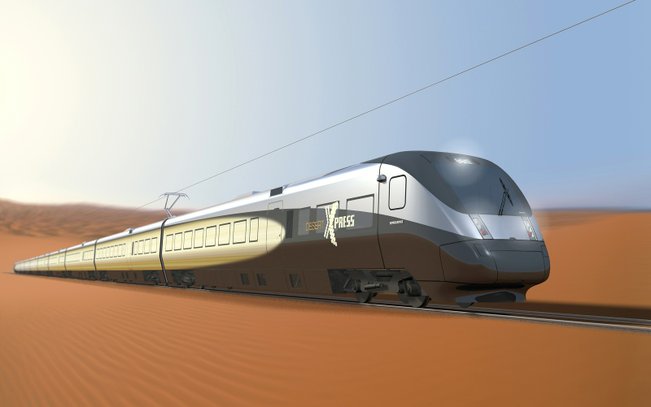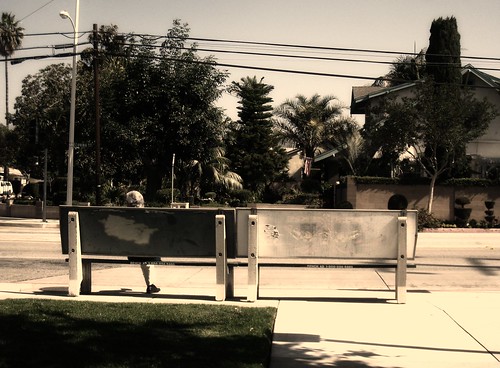Santa Monica Dispatch » Blog Archive » City “Solution” Far Worse Than Problem

City “Solution” Far Worse Than Problem
By: Peggy Clifford
Published: May 7th, 2009
These days, when City Hall people speak of “improvements,” “enhancements,” “beautification,” or ‘opportunity,” an ever-increasing number of residents shudder seismically.
Too often, City “improvements,” “enhancements,” “beautifications” and “opportunities” have turned out to be MORE of something we need less of.
“Less” is a concept that City Hall rejected some time ago. Invariably, quantity tops quality, trendy trumps style, and confusion smothers clarity.
Only City Hall people would see the prospect of a light rail station in the most congested area of the city as “an exciting opportunity.”
We’re speaking of the area where what City Hall now calls the “Station District,” the “Civic Center District” and the “Downtown District” converge. Not so long ago, neither downtown nor the Civic Center were “districts,” and they didn’t converge. They were separated by the10 freeway. It was a clean and useful break, as it held the downtown commercial commotion at bay and prevented the traffic tsunami from rolling across the Civic Center and swamping Ocean Park.
The Civic Center has long been a kind of oasis in the midst of the rising hubbub. wide, open, pleasantly aloof, coherent.
But, for all its crooning about open space, City Hall abhors nothing so much as passive land, and, in 1993, it commissioned a Civic Center Specific Plan. Since then, the Plan has been revised regularly — with each iteration more muddled and misbegot. At the same time, it began adding buildings that in design, scale and location insulted the original buildings.
The latest iteration of the Plan includes a multi-million-dollar remodel of the Civic Auditorium, as well as a kind of joint use partnership with Santa Monica High School, facilities. The school campus is just across Fourth Street from the Civic Center, and is now part of the “Civic Center District.”
Owing solely to City Hall’s continuing inability or unwillingness to commit itself to preserving the unique character of the Civic Center, it has been in planning limbo or more than a decade.
The Santa Monica Pier has always been a major traffic attraction. City Hall’s decision to brace the pier with Santa Monica Place and “hotel row” and to spend millions promoting this fabled beach town as a “regional commercial hub” and romper room were the genesis of Santa Monica’s now-legendary gridlock.
In 1996, in response to residents’ mounting complaints, then-planning director Suzanne Frick announced that a “comprehensive” traffic plan was in the works. But, 13 years have passed, Frick decamped for Long Beach several years ago, and no such plan has ever appeared, because City Hall is much better at cause than effect.
Specifically, according to City Hall, this latest “exciting opportunity” deals with an “anticipated increase in pedestrian activity” by making radical changes in “the patterns of traffic and movement in the downtown area…that incorporates additional park areas, smooth circulation with pedestrian, bicycle and transit access, and a vibrant gathering space, while simultaneously achieving the goals in the Civic Center Master Plan, the LUCE Strategic Framework and Creative Capital.”
The most striking, and ominous, aspect of this plan is the weight it gives the station, and the license it gives City Hall to remake the heart of Santa Monica.
Downtown Santa Monica and the Civic Center can fairly be called “districts,” but the proposed station certainly doesn’t rate the designation on its own. Clearly, it’s not just a station to City Hall, it’s salvation, and it will require millions of dollars and spreading rather than reducing the congestion.
The “Station District” at Fourth and Colorado, will inject more pedestrians into the Downtown District, which is already choking on traffic of every sort. It will add a plaza at the station, as well as “wider and improved pedestrian access routes between the Santa Monica Pier, the beach and the Civic Center,” and a trolley or shuttle from the station to the Pier and back.
It will also “modify the grid” by adding a new street from the Freeway’s Fourth Street off-ramp to divert freeway traffic away from the station – and, not incidentally, from downtown Santa Monica. Thus, motorists would have to go south into the Civic Center and/or Ocean Park in order to go north into downtown Santa Monica.
This “modification” will displease drivers, Ocean Park residents and downtown business owners, but this plan isn’t about pleasing people.
It would be far simpler to close the Fourth Street off-ramp, which is it a branch of the Fifth Street off-ramp, and wave everyone off at Fifth. But this plan isn’t about simplicity either.
And why is the station on Fourth anyway? Some years ago, the City paid $34 million for the Sears auto shop for some sort of transit station.
At the time, we wondered at the efficacy of locating it hard by the principal downtown freeway exit.
Since the light rail is still five years away, the City could find a more functional location, but, as we have learned, City Hall people would rather change Santa Monica than change their collective mind.
The plan also calls for creating more open and park space, by “capping” a portion of the freeway east from McClure tunnel in order to “reconnect” the Civic Center District’s green space with the Downtown District’s ungreen space.
Surely decking the freeway and calling it open or park space amounts to consumer fraud—especially since the Downtown District has been connected to the Civic Center District for decades by the landmark Main Street bridge, so “reconnection” via the freeway deck would also be redundant…and utterly mad — especially when the bogus open space is less than a block from the ocean.
In fact, this plan is an absolutely perfect recipe for terminal gridlock, AKA chaos. . In that sense, it does fulfill the primary goal of the Civic Center plan and the LUCE “Strategic Framework to impose “urban form” on this beach town. After all, nothing is more urban than gridlock.
Ironically, the accumulating hustle and bustle at its perimeter has isolated the Civic Center, and, if the plan is approved, could cut it off entirely. If City Hall is bent on diverting freeway traffic away from the station, how does it plan to route the 2200-plus City employees and 1100-plus RAND workers, the residents of the planned 364-unit monster “Village” project, and audiences coming and going from the revamped Civic Auditorium? They can’t go north on Fourth, and will only be able to go south on Main. If and when Olympic Drive is extended from Main to Ocean Avenue, they can enter the great coastal traffic jam and creep north or south. Or they can choose the east-bound freeway crawl.
In trying to do so many things, the plan fails to do the one thing it should do, which is to integrate the light rail station and riders into the downtown mix.
No one knows, with any certainty, how many riders there will be. City Hall estimates the current daily transient population at 300,000. Some of them will undoubtedly prefer light rail to buses and/or driving. Since this light rail line begins in downtown Los Angeles and travels west well south of the 10 freeway, riders are more apt to be workers than, say, Bloomingdale shoppers, and more apt to arrive in downtown Santa Monica at 8 a.m. than noon. In addition, more riders may disembark at the 17th Street station on their way to jobs at the hospitals or classes at the college. This is all pure speculation. But City Hall’s radical, elaborate and expensive plan is based on speculation, too. The difference is that the planners choose to imagine hordes, mobs of riders, and we don’t.








































